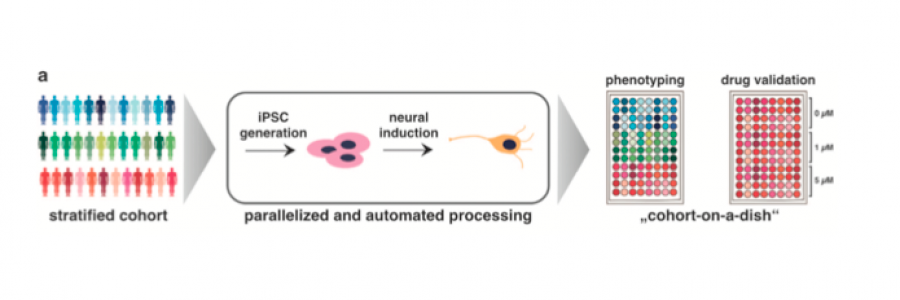
In this expert review, the challenges for modeling of psychiatric disorders, potential solutions and how induced pluripotent stem cells (iPSC) technology can be used to develop an analytical framework for the evaluation and therapeutic manipulation of fundamental disease processes is evaluated.
Psychiatric disorders are associated with major economic, societal and personal burdens. The latest genetic studies have identified >150 risk loci for psychiatric disorders. Proof of a causal role of these genetic loci and understanding the causal pathway necessitates experimental, in vitro studies. However, genetic findings typically show the polygenic nature of psychiatric traits with many involved genes each of small effect. Classical biological methods such as knock out mouse models are not well suited to investigate hundreds of genes each of small effect, and therefore functional follow-up of genetic findings in psychiatric traits has seen very slow progress. Yet, recent advances in genetics and stem cell biology offer new prospects for cell-based modeling of psychiatric disorders. In this expert review, the challenges for modeling of psychiatric disorders, potential solutions and how induced pluripotent stem cells (iPSC) technology can be used to develop an analytical framework for the evaluation and therapeutic manipulation of fundamental disease processes is evaluated.
“The advent of cell reprogramming and iPSC provides an excellent opportunity to translate genetic findings for psychiatric traits into patient-specific in vitro models. iPSC technology allows to reprogram skin cells into neural cells and allows to investigate cellular differences in human cells. There is no need to select one gene to study, we can simply take into account the complete genetic background of a person. We can for example select patients that carry hundreds of risk alleles or patients that carry one mutation that has a very large effect and then compare these patients with healthy controls.”, says Danielle Posthuma, from the dept. of Complex Trait Genetics and one of the lead authors of the study.
iPSC technology is only a decade old but holds great promise for bridging the gaps between patients, genetics and biology. “Despite many obvious advantages, iPSC studies still present multiple challenges, like experimental variations caused by non-standardized protocols or persistent epigenetic modifications. Nevertheless increasing numbers of reports show disease phenotypes in iPSC-based models. It will now be key to find relevant cellular readouts for the pathophysiology of psychiatric disorders, like Schizophrenia, which are generally characterized by clinical symptoms.”, notes Vivi Heine, from the dept. of Complex Trait Genetics and the Dept. of Child Neurology. Heine is the head of the stem cell lab at the VU-VUMC and investigates cellular mechanisms underlying several neurological and psychiatric disorders using iPSC technology.
iPSC-based systems provide a powerful route to identifying molecular mechanisms underlying genetic and other disease-related risks, and are so far less suited to provide information about brain physiology, higher order neuronal circuitry and function or human psychology. But at this stage the results of iPSC studies can serve as input for connectomic and neurocomputational modeling predict patient drug responses and promote preclinical drug discovery. iPSC-derived neuronal networks should become a standard assay for neurophysiologists, forming an integral component of diagnostic and precision medicine for neuropsychiatric disorders and facilitating the first advent of new drugs screened on patient iPSC reach the clinic.
Heine and Posthuma, together with a handful of European stem cell researchers founded the European iPSC Consortium for Neuropsychiatric Disorders—EURICND, in 2015 with the aim to synchronize iPSC studies for psychiatric disorders.
The expert review appeared online May 31 2016: Molecular Psychiatry advance online publication, 31 May 2016; doi:10.1038/mp.2016.89